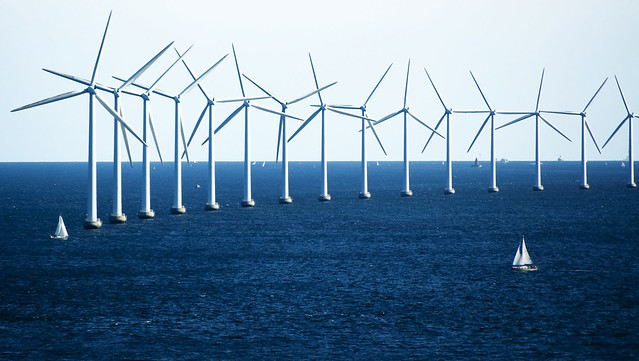"We are taking basic information about golden eagle ecology in the Anthropocene and developing it into predictive frameworks for how to protect them," says Eric Lonsdorf, Emory assistant professor of environmental sciences.
By Carol Clark: Wind energy is a major component of the U.S. clean-energy goals. Already one of the fastest growing and lowest-cost sources of electricity in the country, it is poised for even more rapid growth, according to the U.S. Department of Energy.
Wind power, however, does not come without trade-offs, including some negative impacts on wildlife. Throughout the United States, for example, it’s been estimated that as many as three golden eagles per wind farm are killed each year by wind turbines.
“Renewable energy sources, including wind energy, are critical for us to achieve a net-zero emissions future,” says Eric Lonsdorf, assistant professor of environmental sciences at Emory University. “We need to address conflicts between renewable energy and wildlife conservation so that we can combat climate change while also limiting damage to biodiversity.”
Lonsdorf and colleagues are developing data-driven methods to determine how much effort is needed to save golden eagles in order to offset the impact of wind turbines on their populations.
The Journal of Wildlife Management recently published their latest model for calculating the benefit of one mitigation strategy — removal of large, road-killed animals that can lead to golden eagles getting hit by cars.
Quantifying the benefits of natural capital:
Lonsdorf is an expert in natural capital, or the quantifiable benefits that nature provides humans. He translates ecological principles and data into computer models that enable industry leaders and policymakers to better manage natural resources.
Co-authors of the current study include James Gerber and Deepak Ray, from the University of Minnesota; Steven Slater, from HawkWatch International; and Taber Allison, from the Renewable Energy Wildlife Institute.
The U.S. Fish and Wildlife Service (FWS) monitors golden eagle populations, which are protected through the Bald and Golden Eagle Protection Act and the Migratory Bird Treaty Act. Threats to golden eagles include loss of habitat and prey.
Additional threats that are directly linked to human activities include illegal shootings, electrocution at power poles, lead poisoning from consuming parts of bullets in the entrails of deer carcasses discarded at the site of hunters’ kills, collisions with cars at sites where the birds are scavenging roadkill and collisions with the blades of a wind turbine.
Across the western United States, hundreds of wind turbines have gone up in sage-brush flats that are part of golden eagles’ core habitat, and many more turbines are planned. In order to meet the permit requirements of the FWS, wind-energy companies must agree to mitigate their impact on the animals by offsetting the predicted number of golden eagles that will fly into their turbines each year.
Currently, the only offset strategy approved by the FWS for wind-energy companies is to retrofit power poles to prevent golden eagles from becoming electrocuted.
Adding empirical data:
For the past five years, Lonsdorf and his colleagues have combined their expertise to develop a range of potential offset strategies for golden eagle fatalities.
Their current paper — an updated model for golden eagle mortality due to vehicle collisions based on data from Wyoming — considered myriad factors such as the population density for golden eagles in the region, the number and size of deer roadkill carcasses expected and the traffic volume on the roads. The model also incorporated observational evidence of eagle-carcass roadside interactions obtained by motion-triggered cameras, data that was lacking in a previous model the researchers created.
The addition of this empirical data allowed the researchers to make estimates for how long a golden eagle typically spends at a carcass, how the decay rate of the carcass affects the number of visits from eagles and the effects of seasonality on the scavenging behavior of the eagles.
The model results suggest that carcass relocation is a viable golden eagle mitigation strategy that could save up to seven golden eagles annually in some Wyoming counties. On average, the model indicates that the prompt removal of four roadside carcasses would save at least one golden eagle.
The researchers can make a user-friendly version of the prediction framework available to the FWS and wind-energy companies if the FWS decides to approve carcass removal as an eagle mortality offset strategy. “We’re taking basic information about golden eagle ecology in the Anthropocene and developing it into predictive frameworks for how to protect them,” Lonsdorf says. “As wind energy continues to grow, more mitigation strategies will likely be needed. Our goal is to provide scientific evidence for a portfolio of methods to help accomplish a zero-net loss of golden eagles from wind-energy facilities.”eScienceCommons: Analyzing ways to help golden eagle populations we


